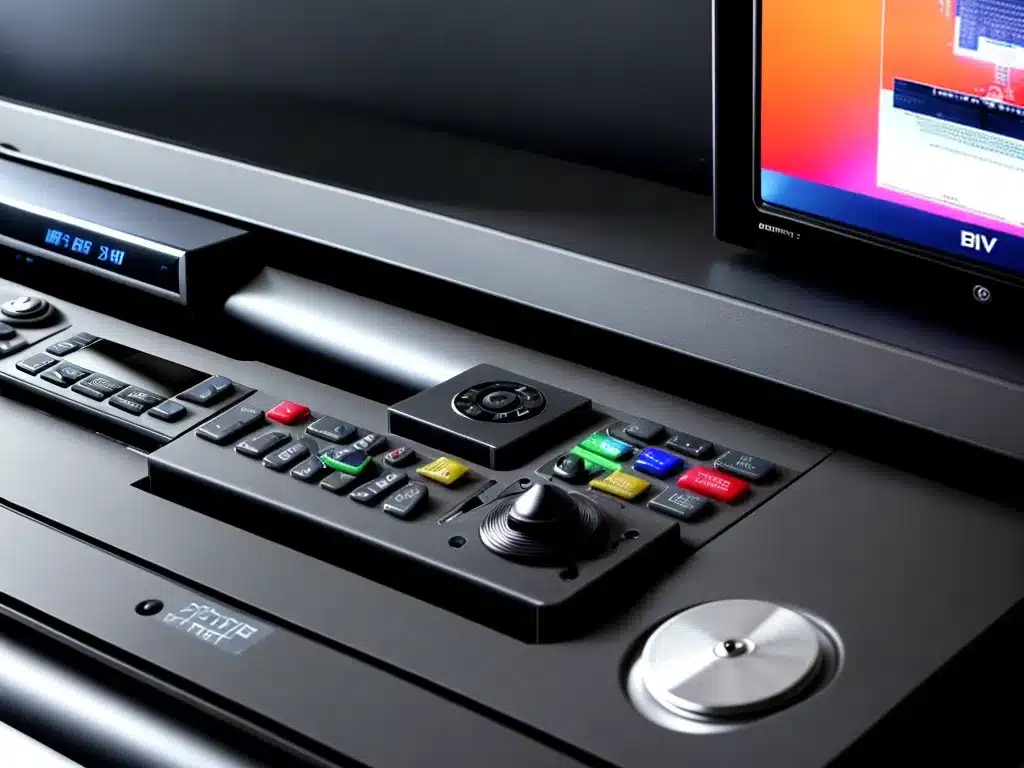
Disc read errors can be frustrating when trying to watch a DVD or Blu-ray on your player. However, there are several things you can try on your own to resolve these issues before taking more drastic measures. With some basic troubleshooting, you can often get your player working again in no time.
Cleaning Discs and Lens
One of the first things to try is thoroughly cleaning the disc itself as well as the lens inside the player.
Cleaning the Disc
- Carefully wipe the bottom of the disc (the side you read) with a soft cloth. Wipe in straight lines from the center to the outer edge of the disc. Do not wipe in a circular motion.
- Use a lens cleaning solution designed specifically for CDs/DVDs. Put a few drops on the cloth and wipe the disc.
- Avoid using water, soap, or alcohol-based cleaners as these can damage the delicate surface of the disc.
Cleaning the Lens
- Open the disc tray on the player. Locate the lens inside (often near the back of the open tray).
- Use a lens cleaning kit with a brush and cleaning fluid designed for CD/DVD players. Lightly brush the lens and then apply a small amount of cleaning fluid.
- Allow to air dry fully before closing the tray and testing.
Cleaning both the disc and lens removes dust, fingerprints, and debris that could be interfering with the laser reading the data on the disc.
Checking Disc for Damage
Inspect the disc closely for any visible scratches, cracks, or other physical damage. Hold the disc up to the light and look at it from different angles.
- Small scratches are often OK, but deep gouges and cracks can prevent the disc from being read properly.
- Try to determine if the damage is in the area where data is stored. Avoid touching this surface.
- Test the disc in another player if possible to isolate the issue.
If the disc is badly damaged, you may need to replace it if possible.
Trying a Different Disc
Attempt to play another disc in the same player. This helps determine if the issue is with that specific disc or the player itself.
- If the new disc plays fine, then the original disc is likely damaged or dirty. Follow cleaning or replacement steps.
- If the new disc also gives errors, then the problem is with the player.
Checking Disc Format Compatibility
Make sure the disc format is compatible with your player. For example:
- DVD players typically support DVD, DVD+R, DVD-R, DVD+RW, and DVD-RW discs.
- Blu-ray players support Blu-ray discs as well as DVDs and CDs.
- Players are region encoded to only play discs from certain parts of the world.
If you’re unsure about format compatibility, check the player manual or specifications. Using an incompatible disc type will result in read errors.
Adjusting Playback Settings
Some players have settings related to playback and reading discs that you can adjust:
- CD/DVD drive speed – Lower speeds may result in better read performance.
- Output resolution – Try lowering the video output resolution.
- Digital audio output – Change from bitstream to PCM.
- Blu-ray BD-Live setting – Turn off to reduce disc load.
Refer to your player’s settings menu and manual for options. Changing these settings can potentially help with read issues.
Hardware and Firmware Troubleshooting
If you’ve tried the above steps and are still experiencing disc read problems, there may be an underlying hardware or firmware issue with the player. Here are some things to check:
- Upgrade firmware – Check the manufacturer’s website for any available firmware updates. Follow instructions to install the latest update.
- Reset player – Perform a factory reset on the player which reverts settings back to default.
- Replace parts – Open the player casing and reseat ribbons, clean interior dust, or replace the laser assembly if defective.
- Professional service – For major issues, take the player to a repair shop for inspection and service by experienced technicians.
When to Replace the Player
If you’ve exhaustively tried the above troubleshooting steps, cleaned discs, adjusted settings, updated firmware, serviced the unit, and discs are still not reading, the DVD/Blu-ray player itself may need replacement.
Common signs the player is failing include:
- Inability to read any discs at all
- Intermittent ability to read certain discs but not others
- Progressively worsening read capability
- Unusual grinding or clicking noises during disc spin up
- Error codes related to hardware problems
At that point it is typically more cost effective to purchase a new player rather than sink more money into repairs. Although inconvenient, replacing the unit will ultimately provide you with a long-term solution.
Summary
DVD and Blu-ray players rely on very precise optical components to read discs. But issues can arise over time from normal wear and tear, damaged discs, or compatibility problems. Using the step-by-step troubleshooting approach outlined above, you can resolve many common disc read errors. Proper cleaning and maintenance will keep your player working its best. But at some point replacement may be needed if parts start to fail. With patience and diligence, you’ll be back to enjoying your movie collection again.












